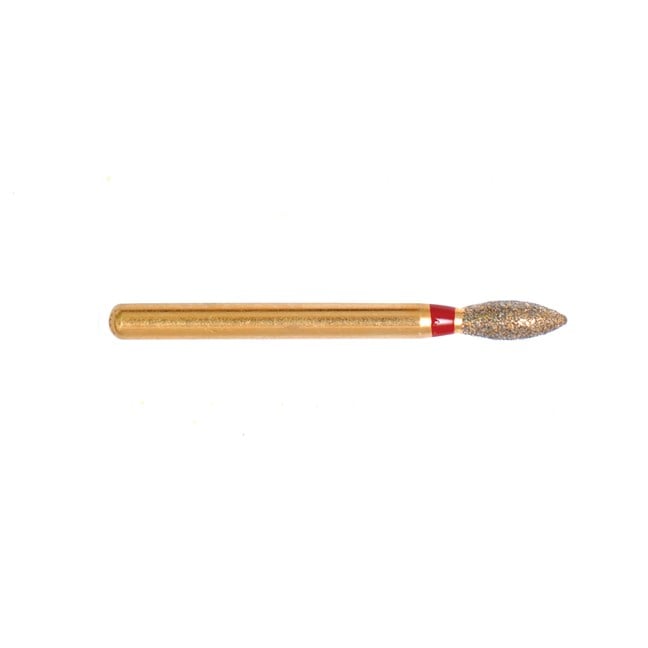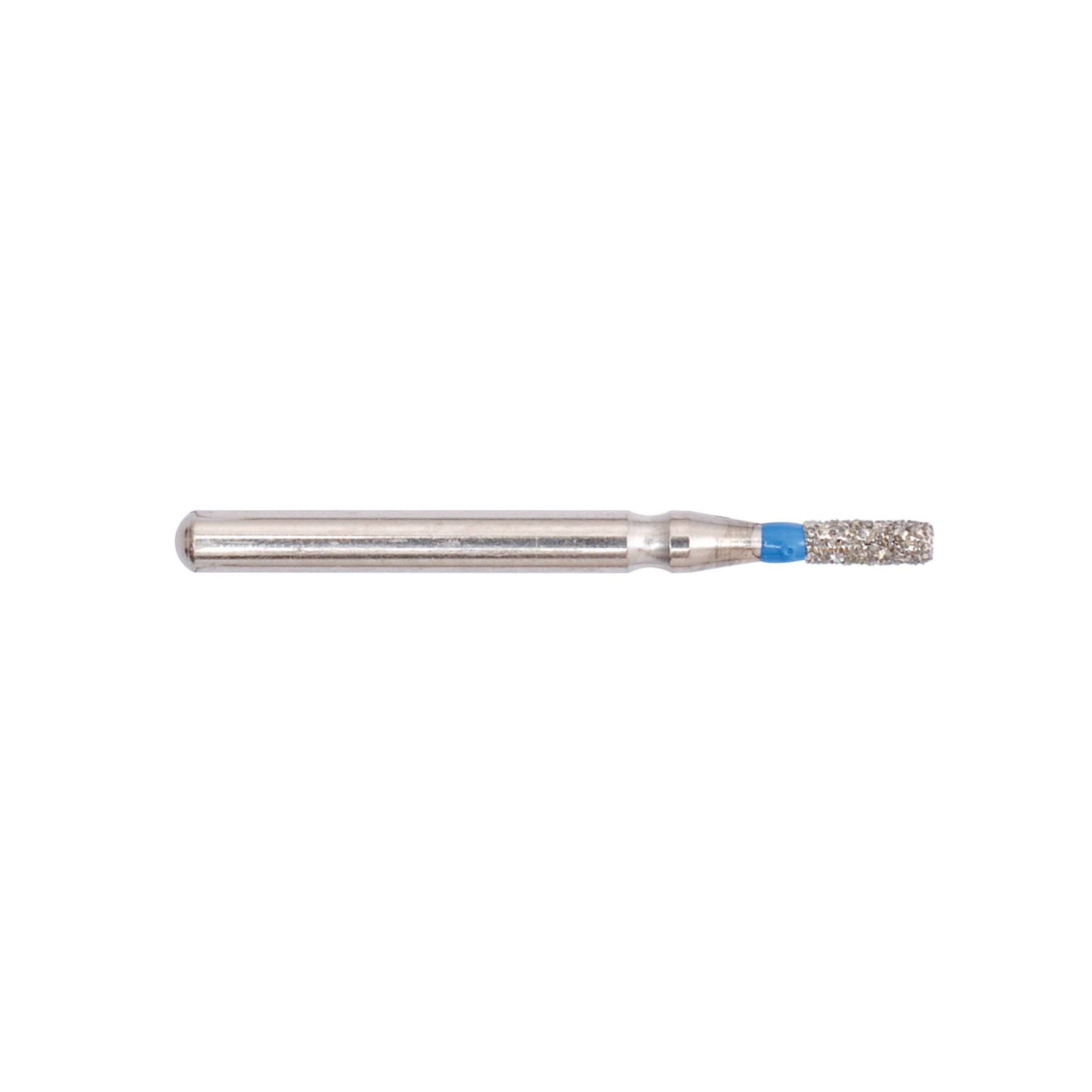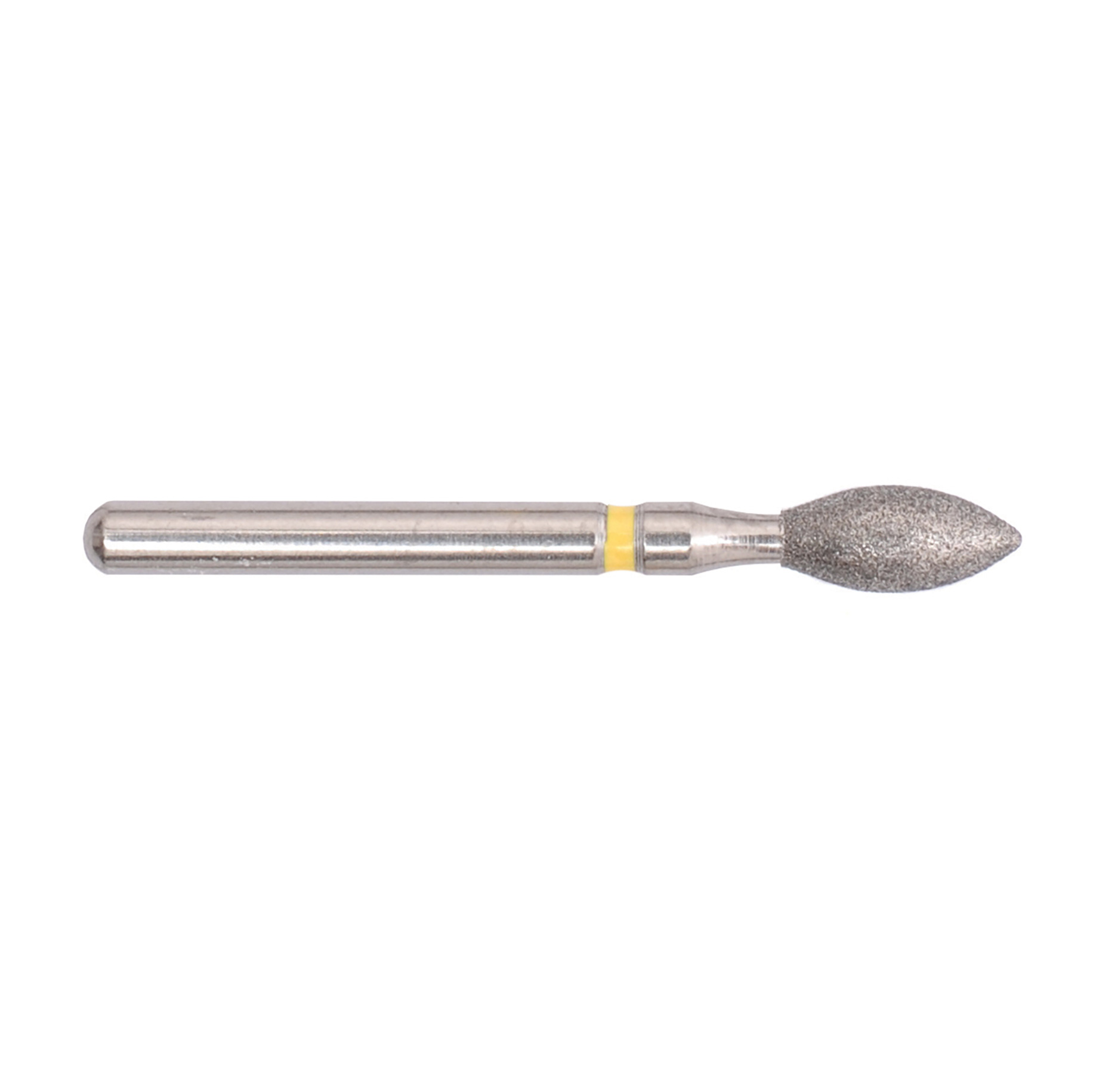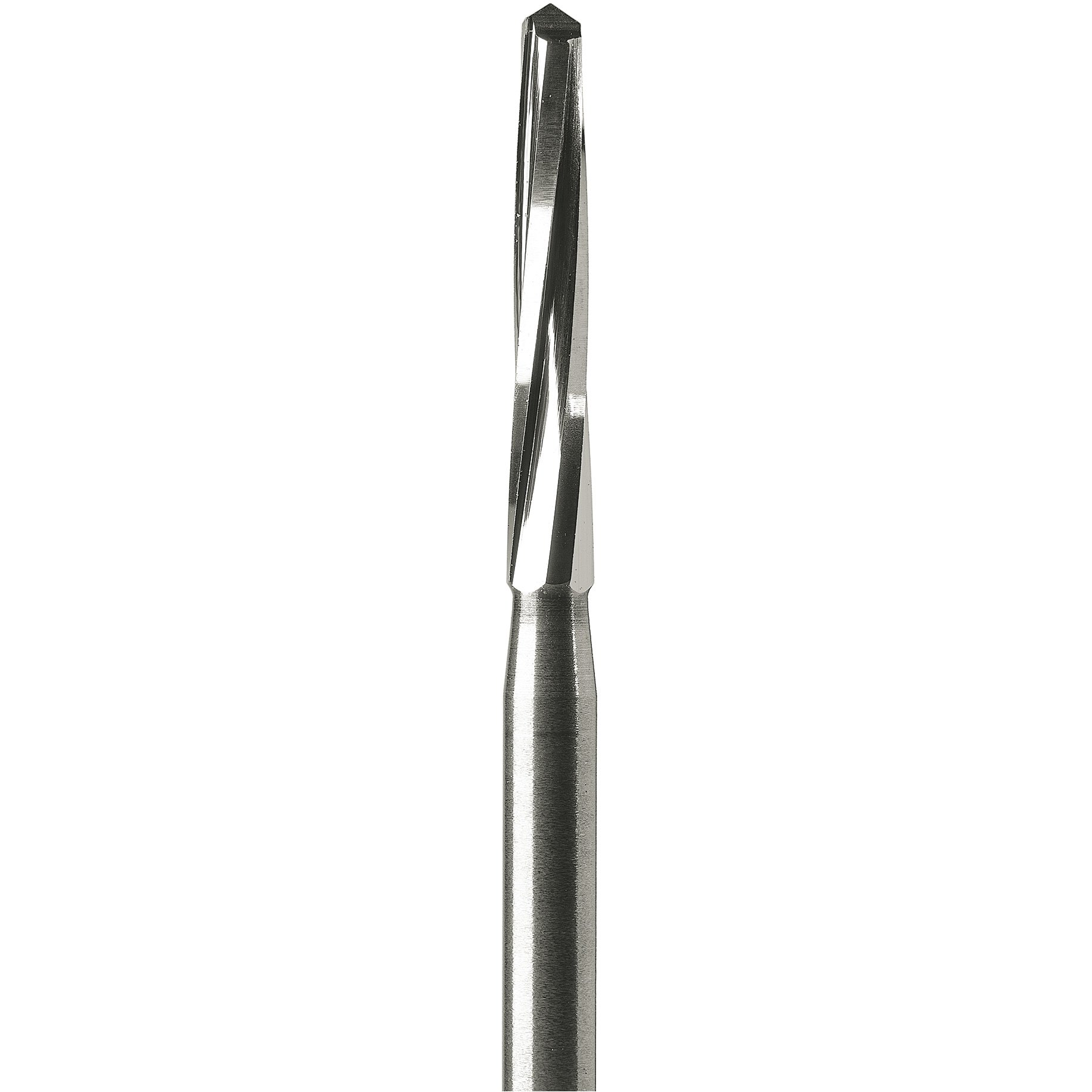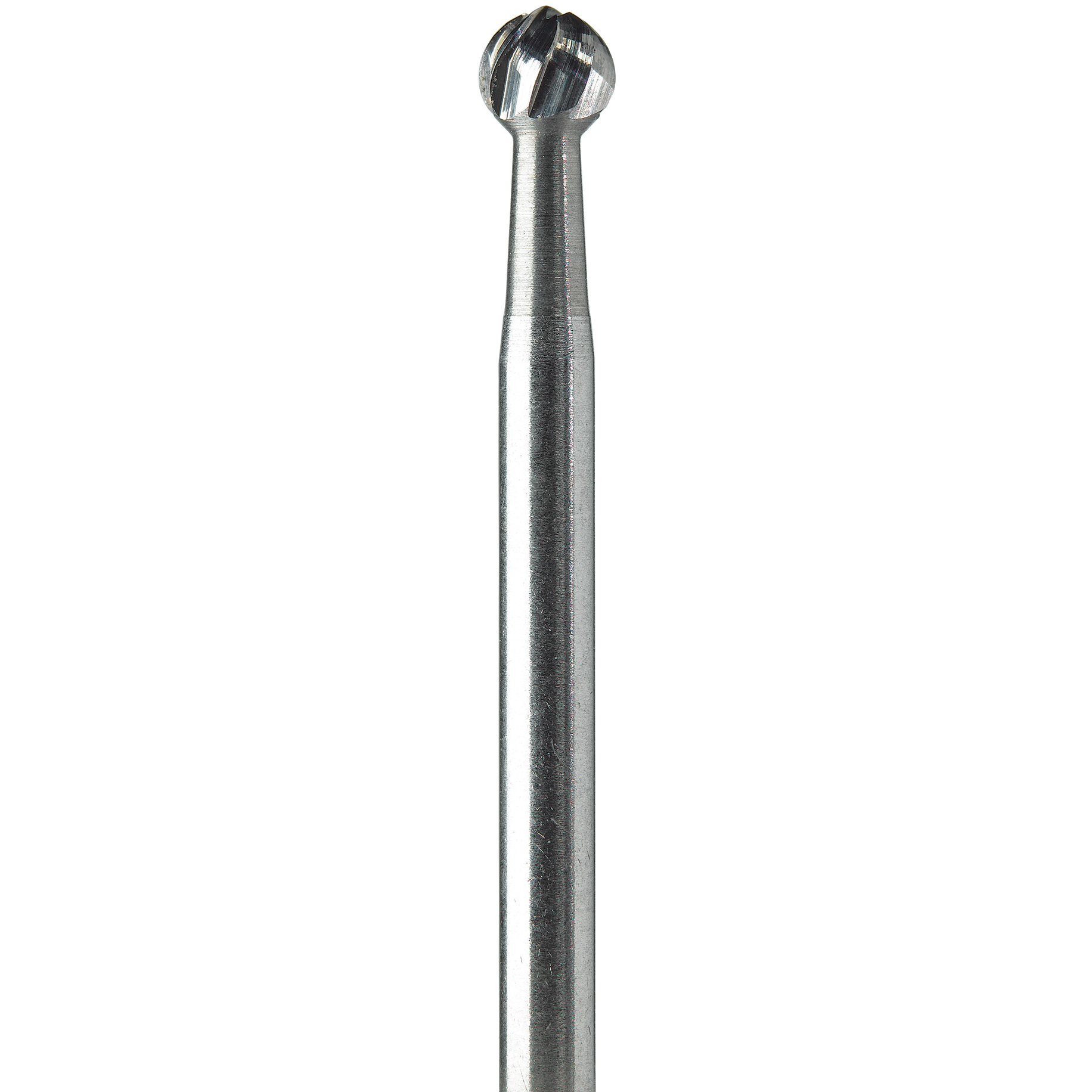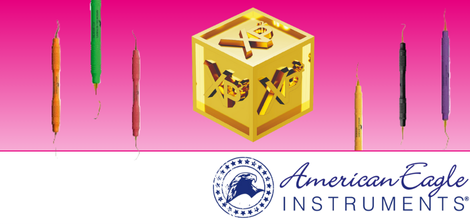Navigate to:
- What are Dental Burs?
- The History of Classification of Dental Burs
- What are Dental Burs Made of?
- What are the Different Types of Dental Bur Shape?
- What Different Grit Sizes Exist for Dental Burs?
- What Different Dental Burs Exist by Handpiece and Shank Design?
- What Other Types of Dental Burs Are There?
- How to Select the Right Dental Bur
- How to Maintain and Sterilise Burs
- Frequently Asked Questions
Shopping for the perfect bur can be overwhelming, to say the least. The choices might seem endless, with a variety of shapes, sizes, materials, colours, and more. To simplify things, we’ve written this extensive guide to dental burs, which will help you understand how burs are classified, the benefits of their various materials, and their clinical applications.
What are Dental Burs?
If handpieces are dental drills, burs are dental drill bits. Burs are rotary instruments that are designed for cutting through or grinding hard tissues such as tooth, enamel, or bone. Burs come in a range of shapes, sizes, and grits with two or more sharp-edged blades and multiple edges for cutting. Dental burs are an essential part of everyday general dentistry, used in various procedures including cavity preparation, crown work and orthodontics.
Previously, dental burs were used as basic cutting devices in preparing tooth restorations. However, several advancements have pushed the development of the ubiquitous bur to new heights, meaning there are more options for burs, and they can perform an enormous range of dental procedures.
The History of Classification of Dental Burs
Dental Burs are classified across various materials, shapes, grit and shank type to suit specific use-cases and assist with delicate procedures.
However, due to the wide range of burs that exist across these varieties, brands and form factors, dental institutions came together to identify and regulate them within a universal classification system. This has evolved over time to become more simplified to aid with easy and accurate bur identification.
SS White System - 1891
The first dental bur numbering system to be created was by the SS White Company which classified machine-made burs on 9 shapes and 11 sizes.
American Dental Association (ADA) System - 1955
ADA adopted the SS White System and refined it to be more simplistic with only 2 digits that designate a bur, making it easy to remember. However, this classification was limited to head shape and cutting head only, which leaves out the other crucial characteristics of a dental bur. These earlier systems were also restricted to stainless steel (SS) and tungsten carbide burns, meaning diamond burs weren’t included.
International Organization for Standardization (ISO) Specification 6360 – 1979
The ISO system, looked to define the various components of a bur encapsulated in a 15-digit number. The string specified each component within five sets of three digits:
- Material: Material influences a bur’s cutting action. A carbide bur (500) slices, cutting away small sections of tooth for reshaping, whereas a diamond bur (806/807) grind the tooth away.
- Shank Type and Bur Length: This is the longest part of a bur and is used to specify the bur to its respective handpiece (FG, RA or HP) and it’s length. For example, 314 = Standard Friction Grip, 204 = Latch Type RA.
- Head Shape: This component contains the blade, or abrasive face of the bur, which is used for cutting, grinding and polishing. For example, 001 stands for round and 010 for inverted cone. The shape is critical to clinical application.
- Grit Size: Grit is the term used to categorise the abrasive material on diamond dental burs ONLY. Other bur types cut rather than abrade and therefore receive the code 000. The higher the grade of grit, the coarser the material. Coarse grit creates a rough surface, and is used for quick, rough shaping of tough material, or bulk material removal. Fine creates a smoother surface and is less abrasive.
- Head Diameter: Expressed in hundredths of a millimetre, e.g. 016 = 1.6 mm, the diameter greatly influences precision and access required.

In this way, The Unodent Sterile Diamond Bur Round FG 520 Medium, breaks down into 806‑314‑001‑524‑520:
- 806 – Material: Diamond (electroplated)
- 314 – Shank: FG shank, 19 mm length
- 001 – Head shape: Round bur shape
- 524 – Grit size: Medium grit
- 520 – Head diameter: 52 mm head diameter
What are Dental Burs Made of?
Rapidly robust and of high quality, dental burs are made of steel, stainless steel, tungsten carbide, ceramic, zirconia and diamond grit.
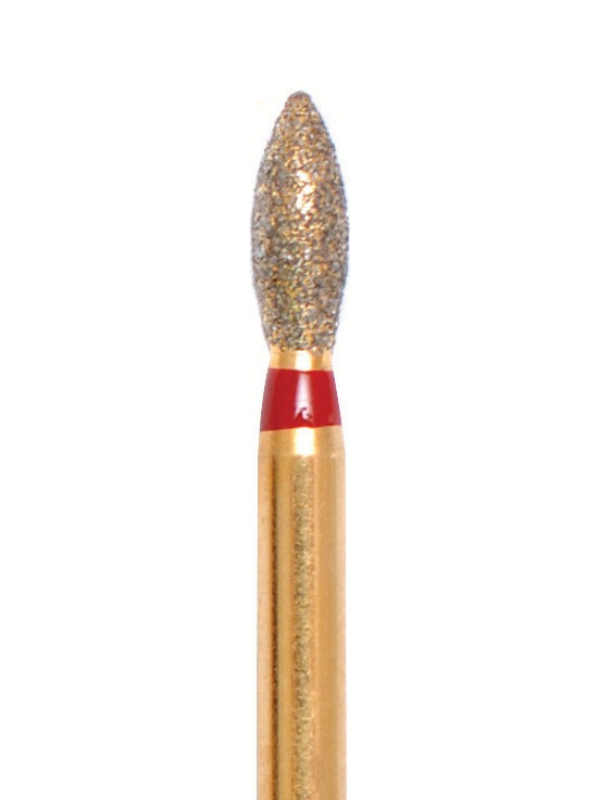
Diamond Burs (806, 807):
Composed of the hardest naturally occurring substance on earth (Mohs Scale 10), Diamond Burs are made by bonding industrial-grade small particles of diamond onto a substrate, allowing for a range of grit surface densities to be available. They don’t tend to “cut” but rather “abrade”, making them perfect for shaping enamel, creating margin detail and working on finer areas where control and smoothness are critical.
Shop Diamond BursBenefits of Diamond Burs:
- ✓ Hard Material Efficiency: Great for abrading enamel, ceramics and zirconia because of their high levels of abrasiveness.
- ✓ Smooth Abrasion Surface: Diamond Burs offer consistent abrasion for shaping and finishing, which reduces chipping on more brittle materials.
- ✓ Minimal Vibration: In comparison to Carbide Burs, Diamond Burs produce less chatter, improving control and comfort in use.
- ✓ Optional Grit Sizes: Being the only bur with a variety of grit sizes, Diamond Burs offer dentists the ability to specify the aggressiveness of abrasion on higher grit sizes, and smoothness of finish with finer ones.
Drawbacks of Diamond Burs:
- ✗ Shorter Lifespan: Diamond particles, despite how hard they may be, are quite brittle. Meaning that they wear down faster when used on dense materials such as zirconia. Equally, they do not withstand higher temperatures for long periods of time, requiring water cooling to avoid pulp damage.
- ✗ Requires Repetitive Disinfection: Diamond Burs are primarily used on hard tissues (such as enamel or ceramic) which often generate aerosols and biological debris, the surface can collect unwanted contaminants – this increased need for cleansing can erode or loosen the diamond bonded grit, reducing cutting ability.
- ✗ Less Effective on Metals and Dentine: Tungsten Carbide performs better on metals than Diamond, both due to its toughness and ability to handle higher temperatures.
What Dental Treatments Are Diamond Burs Used For?
Diamond Burs are usually used in tooth preparation, finishing and contouring. They work well on enamel, ceramics and composite materials. Their abrasive surface, available in several grits makes them ideal for:
- Essential in Crown & Veneer Preparation: precise margin shaping require clean, smooth lines for proper seating and minimal irregularities to avoid microleakage. In this case, tapered diamond burs with flat or rounded ends are best suited to create these finish lines without gouging or chipping.
- Interproximal Reduction (IPR): The smooth control offered by diamond burs allow for precise removal of enamel from between teeth for orthodontic or cosmetic adjustments.
- Composite Finishing: great for producing detailed and smooth shaping restorations.
- Harder Material Adjustment: harder materials such as zirconia and ceramics require precise adjustments to achieve the right fit and margin without fractures.
- Endodontics: the controlled reduction and fine finishing of diamond allows for clean access through enamel and porcelain.
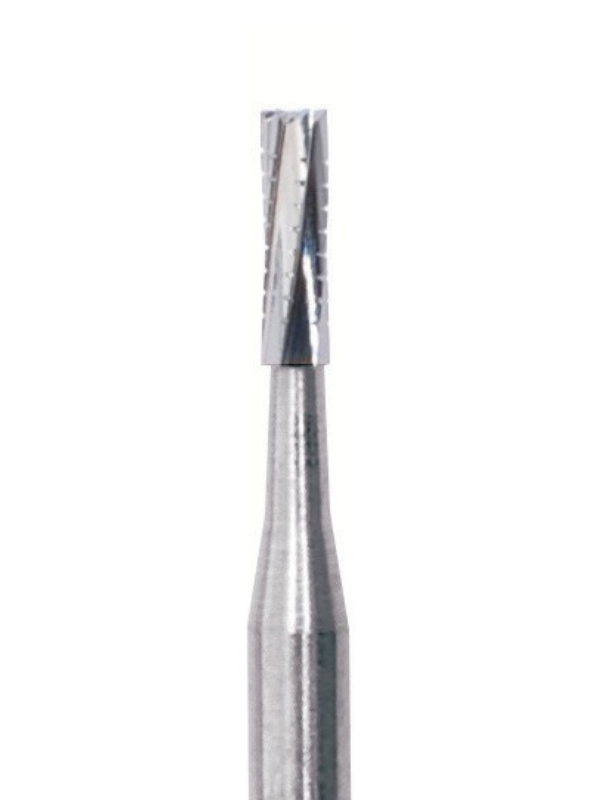
Tungsten Carbide Burs (500)
Sometimes referred to as ‘Carbide Burs‘, these burs are made of an extremely hard material. Tungsten Carbide Burs are a highly effective and sharp cutting tool, offering fast, smooth, vibration-free performance, delivering patient comfort and reduced operative time.
Shop Carbide BursBenefits of Carbide Burs:
- ✓ Material Strength: Tungsten Carbide is three times stronger than steel and can withstand higher temperatures.
- ✓ Increased Longevity & Sharpness: Material toughness leads to increased longevity and sharpness. This minimises overall replacement costs over time.
- ✓ Seamless Finish: Whilst diamond burs grind teeth, carbide burs can cut and chip away at teeth, leading to a better finish.
- ✓ Quieter: Compared to diamond dental burs, they produce less noise and vibrations.
- ✓ Used on a Variety of Materials: Due to their strength and thermal tolerance they can be used to cut through metals such as gold and silver, as well as acrylics.
Drawbacks of Carbide Burs:
- ✗ Less Effective on Hard Materials: Carbide Burs struggle to cut through lithium disilicate and zirconia, whilst excelling on dentine, metals and composites.
- ✗ Aggressive Cutting Action: The sharpness of these burs, combined with a more aggressive, rapid cutting can result in microcracks in brittle materials such as ceramic or restorative porcelains. This also meaning they are less useful for gentle finishing and polishing. Without applying careful control, they can over-cut or remove too much structure.
What Dental Treatments Are Tungsten Carbide Burs Used For?
Tungsten Carbide Burs are primarily used in restorative, surgical and prosthodontic dental treatments. Tungsten Carbide Burs are preferred when controlled, efficient and clean cutting is necessary — especially on enamel, dentine and metal restorations. Due to their hardness, they are used across:
-
Cavity Preparation: Tungsten Carbide burs can be used for excavating and preparing cavities for fillings, the removal of old filling material and contouring bone.
-
Crown and Bridge Work: Retained sharpness and efficient cutting allows for precise reduction of tooth structures. They can also be used for the removal of impacted teeth, and separating crowns and bridges.
-
Restoration Removal: Effective at removing metal restorations, trimming and finishing composites and amalgams.
-
Surgical Procedures: Using surgical carbide burs, dentists can section teeth and contour bone.
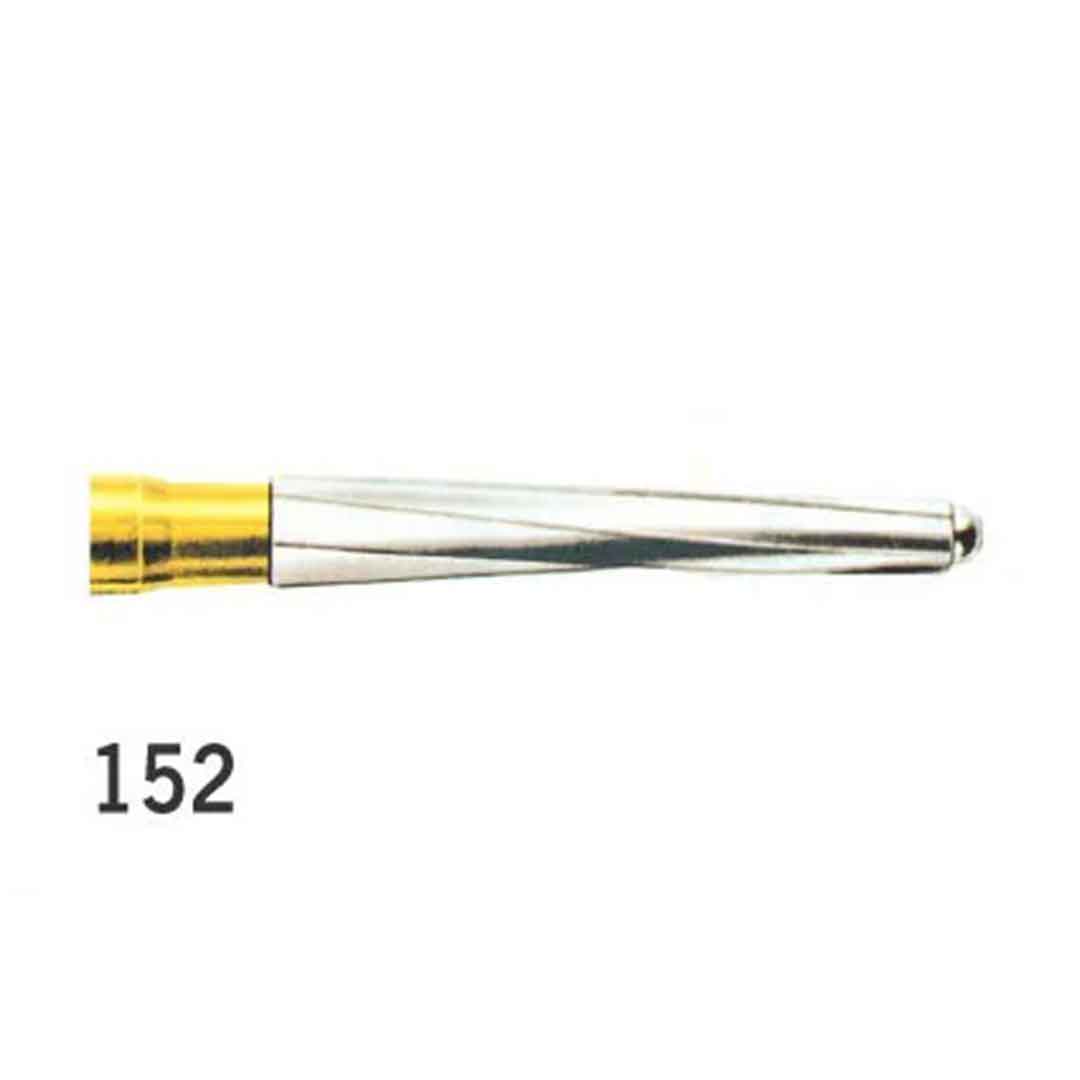
Dentsply Sirona
Zekrya Endo-Z Carbide Bur Surgery/Bone Cutter Cone FG 0.9mm 21mm 152
BOZ152 (Pack 5)
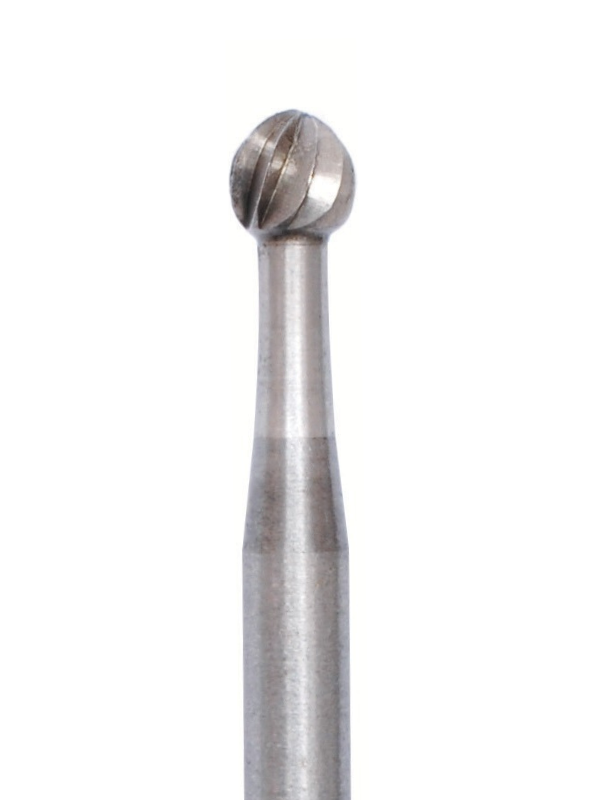
Steel Burs (330)
Known for being more flexible, pliable and soft when compared with carbide or diamond burs, these burs are designed to manipulate acrylic materials, such as dentures and custom trays. Steel burs have good edge retention and are resistant to abrasion, chipping, breakages and corrosion. These qualities make them suitable for more delicate dental work — often used in lower speed handpieces.
Shop Steel BursBenefits of Steel Burs:
- ✓ Ideal for Soft Tissue and Dentine Work: Steel offers a gentler cut, reducing the risk of over-preparation or pulp exposure. Suitable for trimming dentine, removing soft carious tissue, and paediatric dentistry.
- ✓ Cost-Effectiveness: Steel is cheaper to produce and purchase than diamond or carbide burs, which is great for single-use or high-turnover environments.
- ✓ Low-Speed Compatibility: Matched well in lower speed handpieces, which are used for polishing and caries removal. These provide a better ease of control, due to slower rotation and gentler cutting action.
Drawbacks of Steel Burs:
- ✗ Cutting Power, Limited Range: Steel being less hard than carbide or diamond, struggle with harder materials such as metal, enamel and ceramics.
- ✗ Shorter Lifespan: The flexibility and softness of steel whilst offering a gentler cut, mean that sharpness can degrade quicker on hard tissues. Steel can also deform or bend under pressure, especially in narrower shank shapes. This impacts clinical efficiency, leading to frequent replacements and inconsistencies in performance.
What Dental Treatments Are Steel Burs Used For?
Lending their strengths to a coupling of lower speed and pressure applications, steel burs excel at gentler cutting and soft tissue removal. Steel Burs can be used across:
- Caries Removal: Ideal for removing soft, decayed dentine while preserving healthy enamel and minimising the risk of pulp exposure. A preferred choice for minimally invasive dentistry and initial stages of endodontic access.
- Cavity Preparation: Gentle cutting action provides an effective way to outline cavity margins and expose decay within the initial stages of cavity prep. These are then usually followed up with carbide or diamond burs to aid with shaping or hard tissue removal.
- Polishing and Finishing: Low speed applications allow for minor changes, smoothing of temporary restorations and composites, without damaging surrounding harder tissue. Combined with better control, allows for a smooth finish.
- Paediatric Dentistry: Children possess thinner enamel and larger pulp chambers, so more aggressive cutting actions from other burs can do more damage than good.
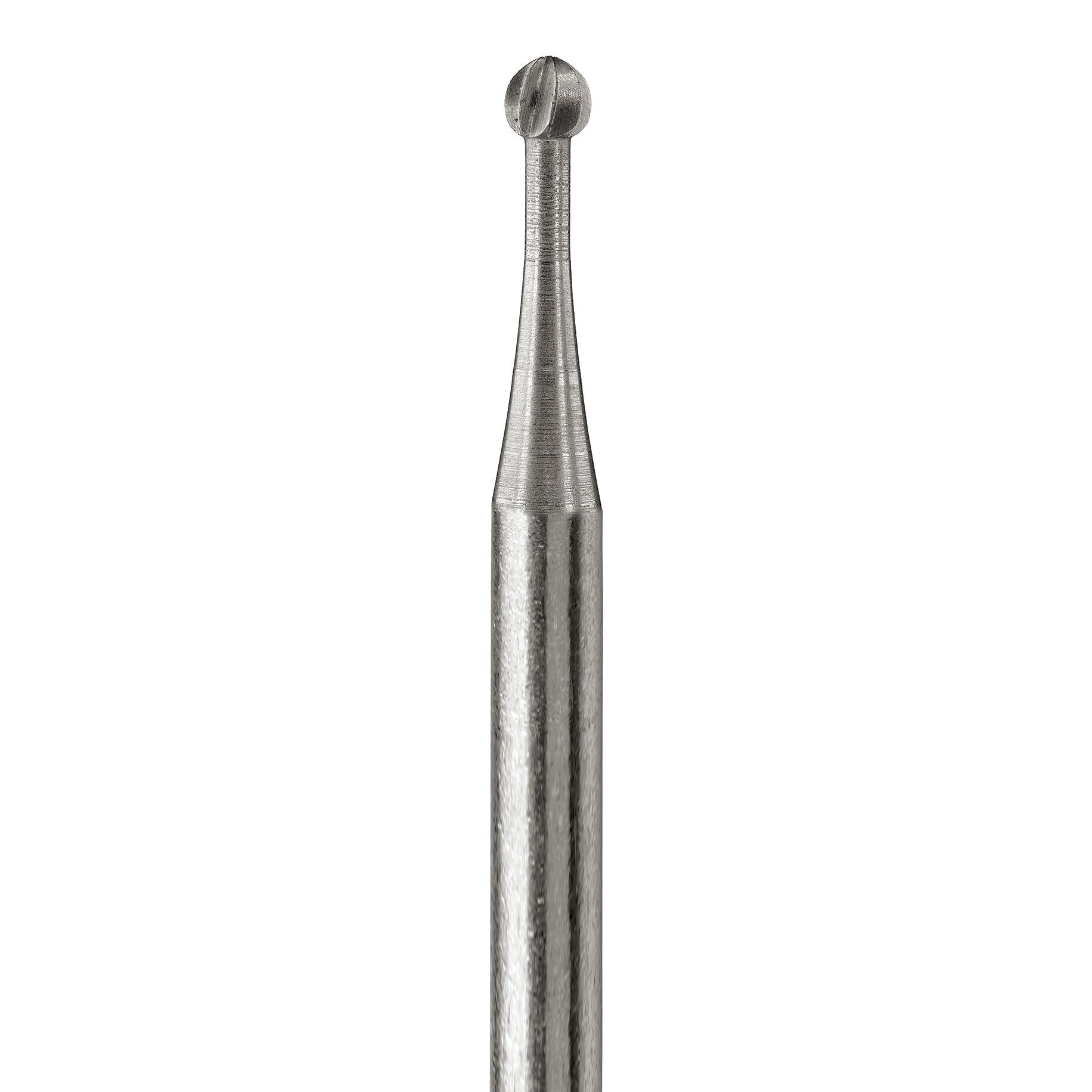
Prima
Steel Bur RA Round No.6 018
BLA6 (Pack 25)
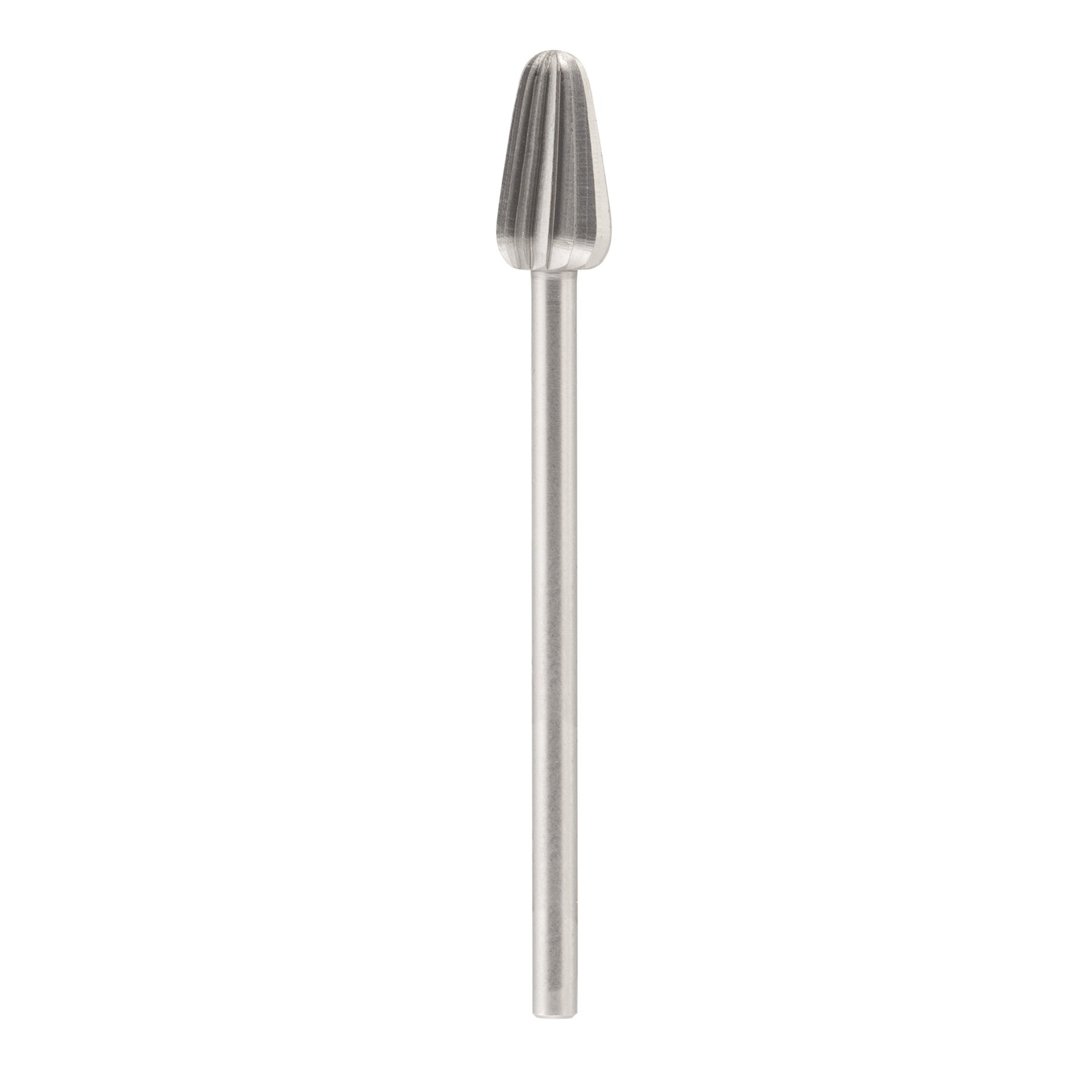
Meisinger
Cutter Steel Bur HP 75 060
BAT220 (Pack 5)
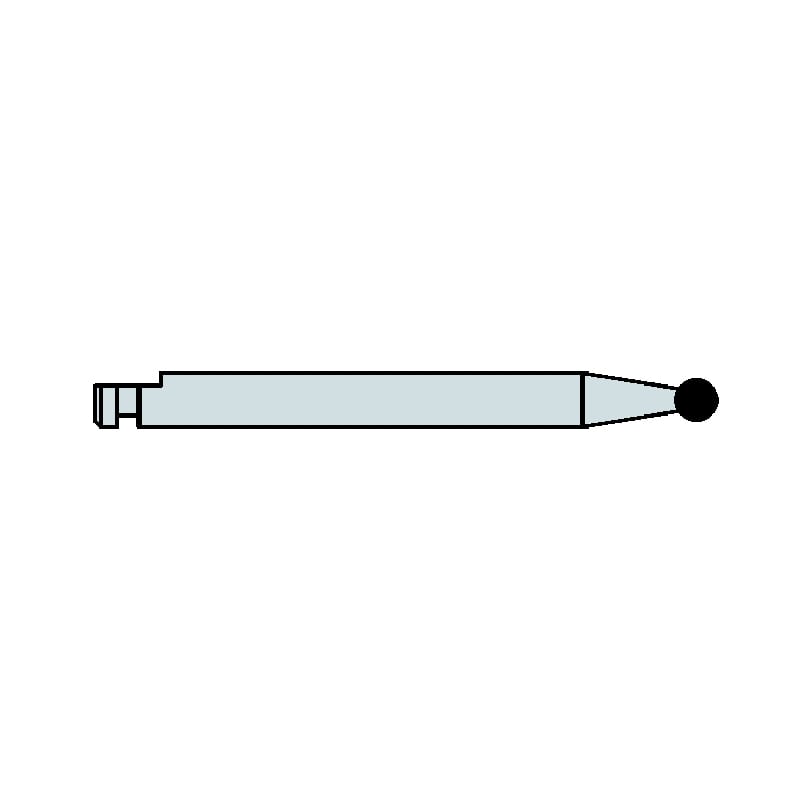
Meisinger
Steel Burs Long Round RA 6 018
BLR18L (Pack 10)
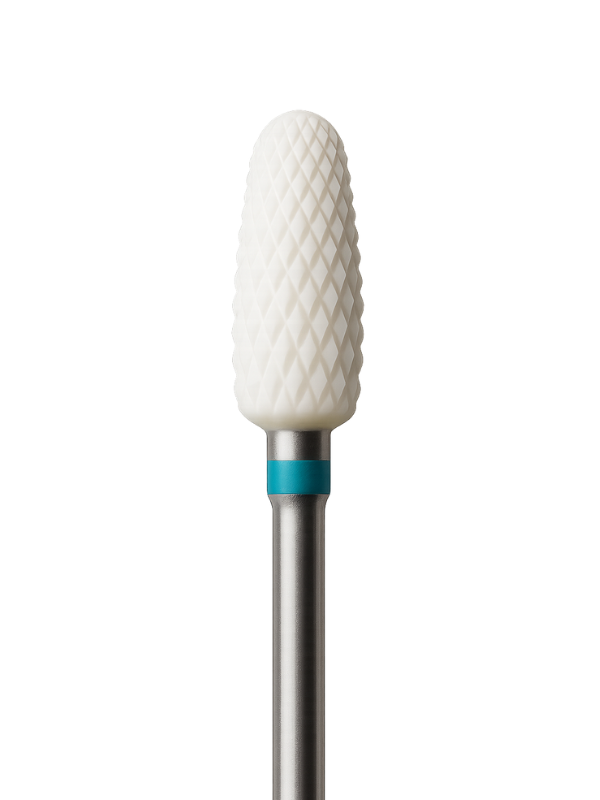
Ceramic Burs (900)
Ceramic burs are composed of advanced oxide ceramics, usually aluminium oxide (alumina) or zirconia dioxide (zirconia). Depending on which ceramic is used, can result in slightly different strengths, despite possessing the same ISO code (900). Overall, Ceramic Burs are designed to be durable, hard, corrosion resistant, biocompatible and of low thermal conductivity.
Shop Ceramic BursBenefits of Ceramic Burs:
- ✓ Low Thermal Conductivity: Less frictional heat is generated during a ceramic bur's use when compared to metal burs, reducing the risk of soft tissue damage, improving patient comfort and safety when used around metal restorations or implants.
- ✓ Biocompatibility & Corrosion Resistance: Ideal for patients who are allergic or sensitive to metals. Ceramics also are resistant to rust and chemical wear – leading to a longer lasting bur.
- ✓ Durability: Higher quality ceramic burs can retain their sharpness for extended periods of time, making them ideal for working with acrylics, composites, soft metals and thermoplastics..
Drawbacks of Ceramic Burs:
- ✗ Difficulty on Hard Tissues: Unlike carbide or diamond burs, they don’t possess the required cutting power to handle enamel or metal restorations well. This also impacts their lifespan when used on these more abrasive materials.
- ✗ Prone to Fracture: Fine-tipped or narrow burs can be prone to cracking under use, especially under excessive pressure or lateral force.
- ✗ Versatility: Ceramic Burs excel at trimming acrylics, adjusting thermoplastics and removing orthodontic adhesives, but struggle with applications in restorative or surgical procedures.
- ✗ Cost: More costly to purchase than steel or carbide burs.
What Dental Treatments Are Ceramic Burs Used For?
-
Trimming and Acrylic Adjustments: Alumina, with its smooth, heat free and less aggressive cutting strength make them more beneficial for trimming acrylics, dentures, composites, night guards and temporary crowns at chairside or lab.
-
Soft Tissue Management: Minimally invasive soft tissue contouring within surgical and restorative procedures, allowing for better visibility and access for crown/veneer margins, retention and fit of restorations and improves aesthetic outcomes. This also extends to Paediatric treatments, minimising trauma and improving healing outcomes.
-
Hard Ceramic Restorations: Zirconia is engineered for use on harder materials, with its more aggressive cutting action, it can cut through zirconia, lithium disilicate and other monolithic ceramics.
What are the Different Types of Dental Bur Shape?
Dental Bur shape greatly influences what precise procedure you are undertaking. Apart from common shapes such as round, pear, flame, cross-cut tapered fissure, cylinder and inverted cone there exists several informal specialised shapes without common ISO codes:
|
Bur Diagram |
Bur Shape & Use |
Buy |
|---|---|---|
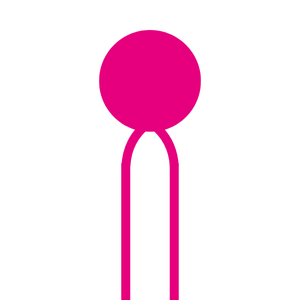 |
Round or Ball or Rose Head Bur (001)Caries removal, endodontic access, smoothing cavity walls and bone surgery. |
Buy |
 |
Barrel BurUsed for bulk reduction especially on occlusal surfaces, and for smoothing large flat areas. |
Buy |
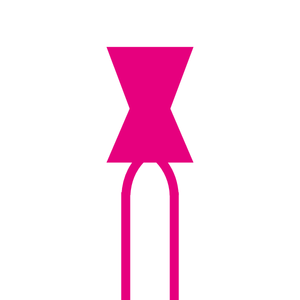 |
Double Cone Bur (037)Aggressive bulk cutting of enamel or restorative materials. |
Buy |
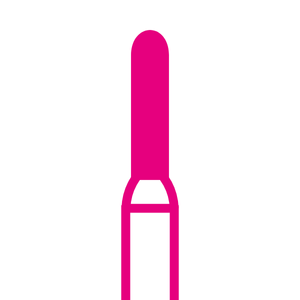 |
Torpedo Bur (284)Torpedo burs are ideal for precise contouring, margin finishing, and accessing deeper areas |
Buy |
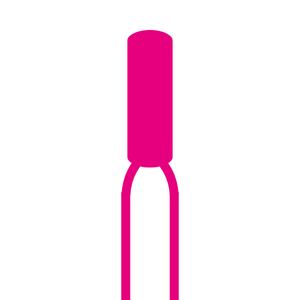 |
Cylinder Bur (107)Parallel wall prep, box form, bulk material reduction in cavity or crown prep. |
Buy |
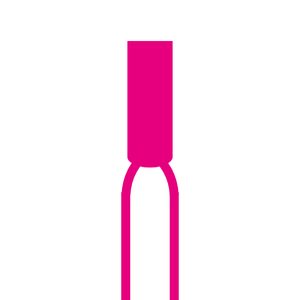 |
Cylinder Flat End BurUsed in flat occlusal surface preparation in crown and cavity work. |
Buy |
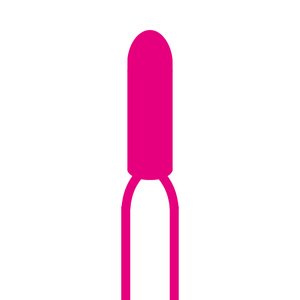 |
Cylinder Round End BurIdeal for smoothing internal line angles and bulk reduction. Used in crown and bridge prep with rounded shoulder margins. |
Buy |
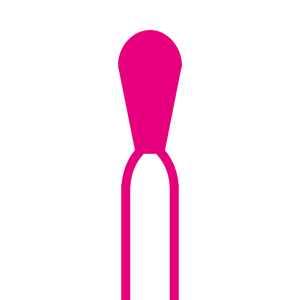 |
Pear Bur (330)Used in cavity preparation and creating access points. Great for bulk removal and precise contouring. |
Buy |
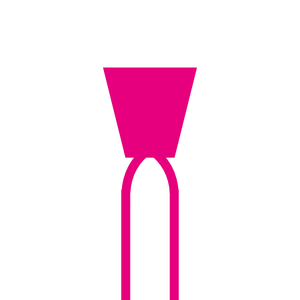 |
Inverted Cone Bur (010)Used to undercut access opening for root canals or for restorations. Also used for flattening pulpal or gingival walls. |
Buy |
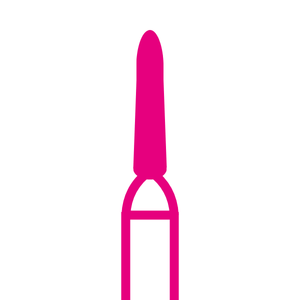 |
Tapered Round End BurUseful for crown and bridge prep, creating smooth internal angles and chamfer finish line creation. |
Buy |
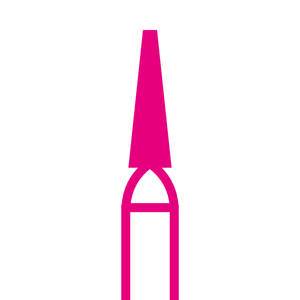 |
Tapered Flat End BurUsed for crown preparation with shoulder margins. Creates sharp internal lines. |
Buy |
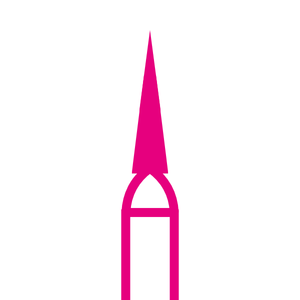 |
Tapered Point BurOffers precision and tight access. Used for initial penetration into enamel and veneer preparation. |
Buy |
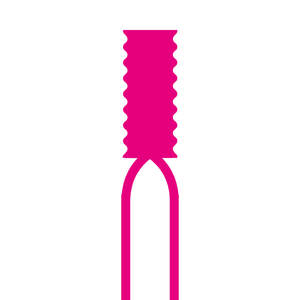 |
Bulk Reducer BurUsed for crown and bridge preparation, as well as preparing cavities, and removing decayed material. |
Buy |
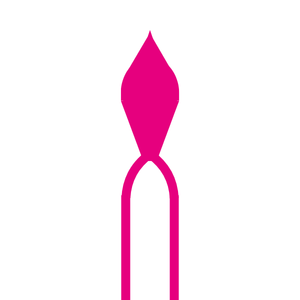 |
Flame Bur (243)For preparation, contouring, and finishing. |
Buy |
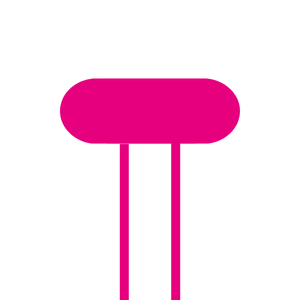 |
Wheel Bur (040-060, 045-049)Used for occlusal adjustments, bulk material removal, and polishing. |
Buy |
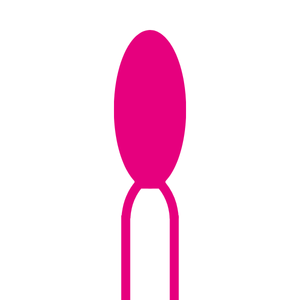 |
Egg / Oval or Football BurFinishing occlusal surfaces, contouring composites, polishing restorative margins. |
Buy |
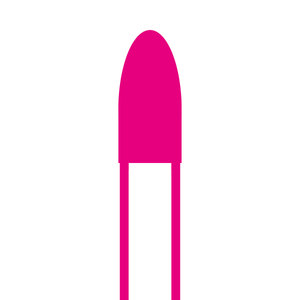 |
Bullet / Pointed Pear BurInterproximal finishing, access to narrow areas, veneer prep. |
Buy |
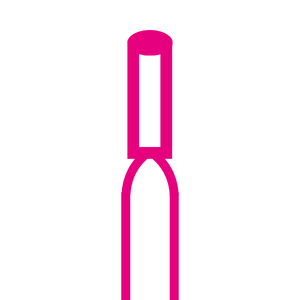 |
End-Cutting / Safety Tip BurSafe for preparing internal cavity walls without damaging the pulp or floor. |
Buy |
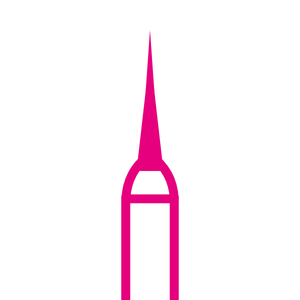 |
Needle / Pin BurFine access in endodontics or fissure prep. |
Buy |
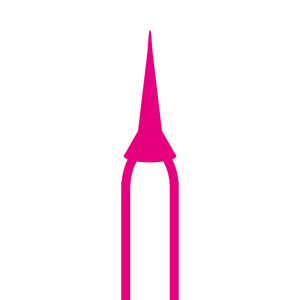 |
Interproximal BurOffers tight access, used for smoothing, polishing and IPR. Also helps to remove bonding resin after bracket removal, with minimal enamel damage. |
Buy |
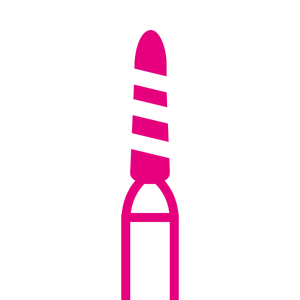 |
Twister BurEfficient cutting with spiral flutes for endodontic access, implant prep, or rapid material removal with improved debris clearance. Often used in surgical or implantology kits. |
Buy |
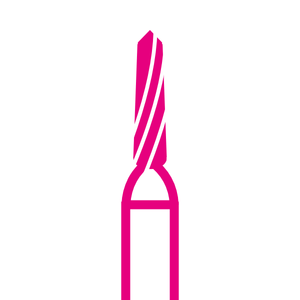 |
Lindemann BurA surgical bur designed for side-cutting, precise sectioning and implant placement. |
Buy |
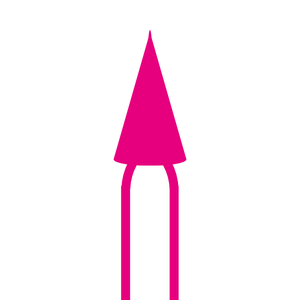 |
X-Mass Tree BurTrimming, finishing, especially in posterior composites or occlusal adjustments |
|
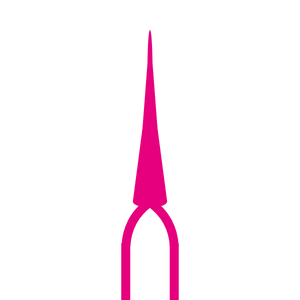 |
Lance BurInitial penetration of enamel, fissure exploration, access cavity starting point. |
|
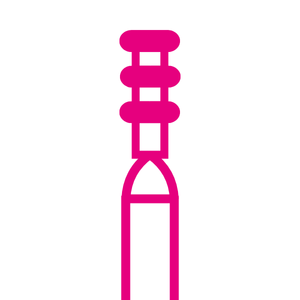 |
Depth Cutting or Veneer BurLabial surface reduction, precision shaping for veneer preparations. |
What Different Grit Sizes Exist for Dental Burs?
Grit Size only applies to diamond burs, as they abrade, rather than cut. Like sandpaper, diamond burs come in different grades of coarseness or ‘grit size’. In essence, the abrasiveness varies to suit different jobs. The harsher the grit, the more tooth surface will be removed. Finer grits are best suited to work that requires finite detail, such as the smoothing of rough edges or around margins. Bur grit size can be identified by both their ISO number and band colour:
Super Coarse (ISO 544)
With an approximate grit size of ~180 microns, super coarse burs are colour-coded with a black double band. They are ideal for rapid bulk reduction of hard materials like zirconia or metal restorations.
Coarse (ISO 534)
These burs have a grit size of around 125–150 microns and are marked with a green band. They are commonly used for initial tooth structure removal and aggressive preparation work.
Medium or Standard (ISO 524)
With a grit size of about 100–120 microns, these burs may have no band or a blue band. They are the workhorses of restorative dentistry, suitable for general crown and veneer preparations and routine tooth reduction.
Fine (ISO 514)
Fine-grit burs have a size range of 40–60 microns and are identified by a red band. They are excellent for finishing cavity and crown preparations, especially around margins and contact points.
Extra Fine (ISO 504)
At around 30 microns, extra fine burs are colour-coded with a yellow band. These are used for polishing and smoothing margins, especially in cosmetic procedures.
Super Fine (ISO 494)
The finest available, with a grit size of ~15 microns, these burs are marked with a white band. They’re typically reserved for final enamel smoothing and achieving a high-gloss finish on restorative surfaces.
What Different Dental Burs Exist by Handpiece and Shank Design?
Burs whilst characterised by shape and material, the type of handpieces they are compatible also influences their classification. This is highly dependent on the type of shank they possess.

Friction Grip (FG) Burs
Also known as Turbine Dental Burs, High Speed Burs or High Rotation Burs. FG burs are used with high-speed turbine machines (300,000–450,000 rpm) and possess a shank diameter of 1.6 mm. Used for cutting hard materials—express removal of enamel, cavity preparation and crown/veneer preparation. They are usually used with Diamond Burs, Tungsten Carbide and Zirconia. ISO codes across: 313, 314, 315, 316, in varying lengths.
Shop FG Burs
Latch-Type (RA) Burs
Otherwise known as low-speed burs, with RA standing for right-angle attachment which allow for a snap-lock into low-speed contra-angle handpieces (5,000–40,000 rpm) with a shank diameter of 2.35 mm. These are for precise, smooth and controlled movements: caries removal, polishing, finishing and endodontic access. Materials used are Steel, Tungsten Carbide and Ceramic. Common lengths: 22 mm (ISO 204) & 26 mm (ISO 205).
Shop RA Burs
Straight Handpiece (HP) Burs
Long Straight or Straight Handpiece (HP) burs are for slow-speed handpieces (5,000–40,000 rpm) used in lab or surgical settings, with a shank diameter of 2.35 mm. Their lower speed makes them ideal for surgery, lab work, extraoral and denture trimming. Materials: Steel & Tungsten Carbide. Common lengths: 44.5 mm (ISO 104) & 65 mm (ISO 105).
Shop HP BursWhat Other Types of Dental Burs Are There?
Burs for Restorative Dentistry
Restorative dentistry is considered the most common area where burs are used. Burs are primarily used for cavity preparation, removal of carious tissue, shaping dental restorations as well as finishing and polishing across composites, amalgam and glass ionomers.
- Common shapes: Round, Pear, Inverted Cone, Flame and Tapered Fissure.
- Materials: Diamond, Tungsten Carbide and Steel.
Endodontic Burs
Endodontic Burs are designed to aid with root canal access, with careful design with non-cutting tips to prevent pulp floor perforation.
- Common burs: Endo Z Bur, Peeso Reamer and Gates Glidden.
- Materials: Steel and Tungsten Carbide.
Surgical Burs
Used in oral surgery, these burs need to be strong and durable and offer high performance. Surgical Burs undertake bone contouring, tooth sectioning and root-end surgery.
- Common Burs: Round, Crosscut Fissure and Lindemann
- Materials: Diamond and Carbide.
See Our Range of Surgical Burs
Orthodontics Burs
Orthodontic Burs can be used for interproximal reduction, de-bonding and predictable and safe resin removal, with minimal damage to tooth enamel, as well as for subsequent enamel polishing.
- Common Burs: Debonding Burs, Polishing Burs, Safe-Tipped Carbide, Diamond Strips
- Materials: Ceramic, Fine Diamond and Carbide
See Our Range of Orthodontic Burs
Laboratory Burs
Are designed to handle extraoral adjustments in dental labs or during dental denture fabrication. These are more commonly used by dental technicians, rather than chairside. Paired with bench motors or laboratory micromotors, with lower speed but higher torque, they are suitable for smoothing and contouring thermoplastics and ceramics, as well as adjusting crowns and bridges.
- Common Burs: Acrylic Trimmers, Polishing Wheels, Ball, Cylinder and Football/Egg Shaped.
- Materials: Carbide, steel, ceramic.
Looking to Buy Several Burs to Fit Your Needs?
Save money and time with our complete bur kits by Unodent:
Crown Preparation Kit (BD001)
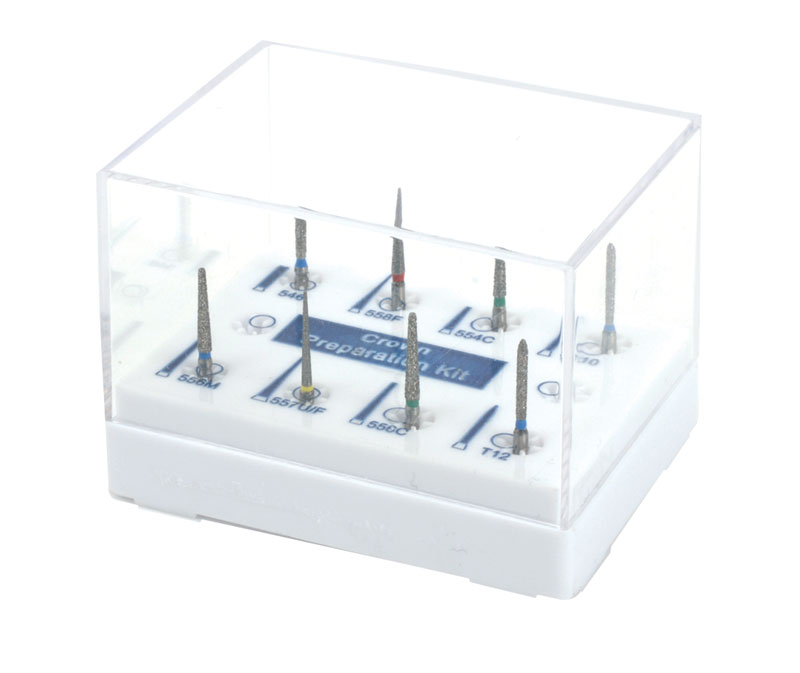
8 diamond burs for bevelling margins, shoulder preparation, bulk reduction, molar and premolar preparation, interproximal finishing, final finishing and crown preparation.
Contains: 290/010, 290/012, 556, 556C, 554C, 557U/F, 558F, 546
Composite & Porcelain Finishing Kit (BD006)
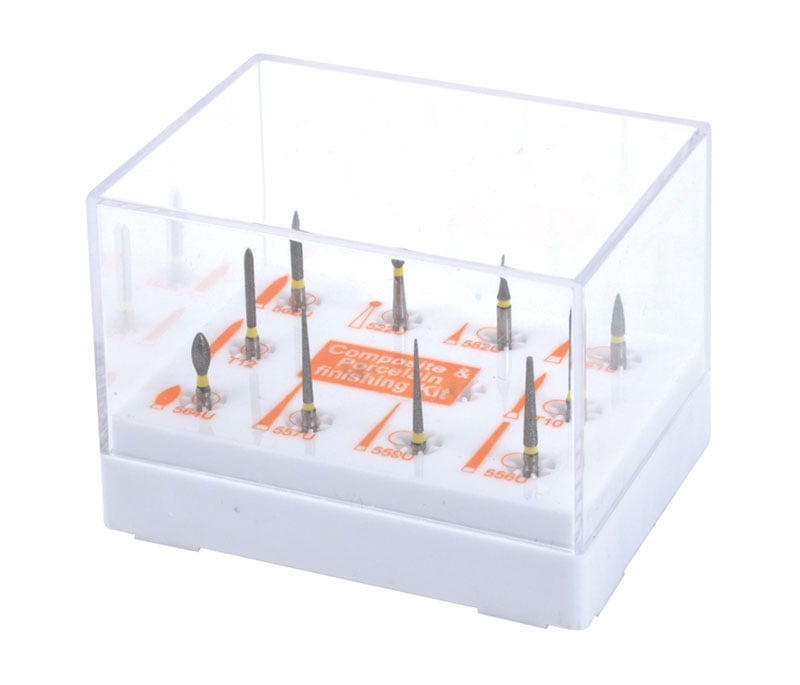
10 ultrafine diamond burs specifically for trimming and finishing composite material, crown preparation finishing, and porcelain veneer after cementation trimming.
Contains: 290/010, 290/012, 556, 556C, 554C, 557U/F, 558F, 546
Cavity Preparation Kit (BD004)
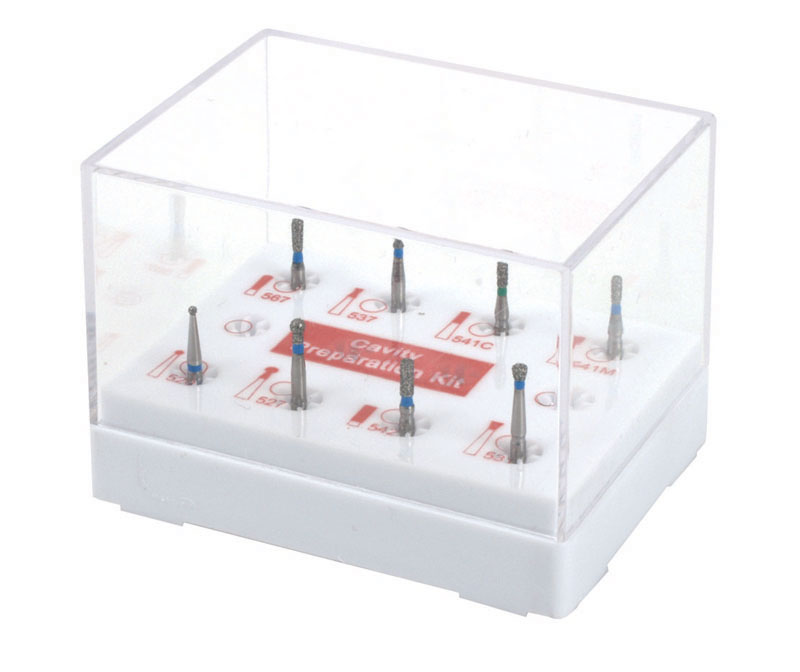
8 diamond burs used for small penetration, cavity preparation, undercutting and extension of cavity.
Contains: 520, 527, 531, 567, 541, 541C, 542, 537
Laminate Veneer Kit (BD008)
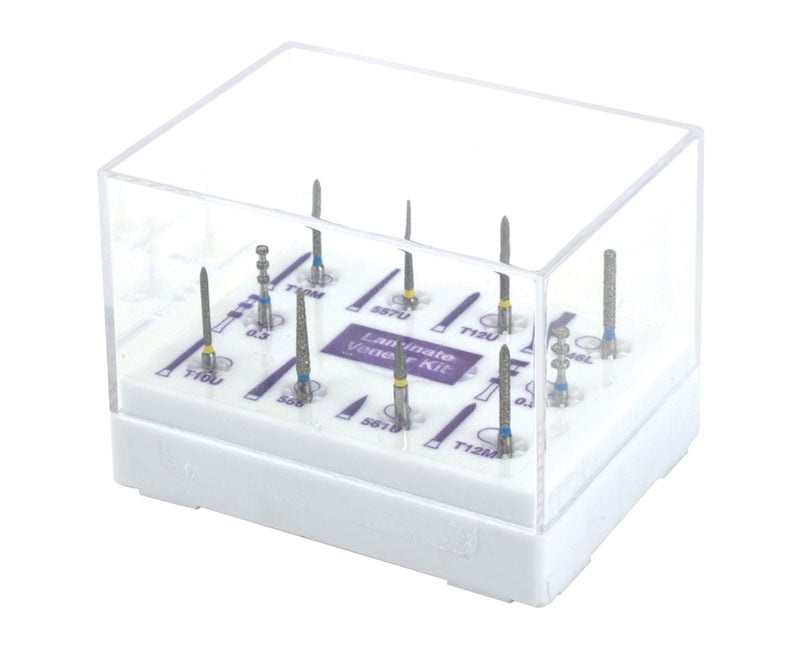
10 diamond burs including ‘Tiger Stripes’ which cut to a depth of 0.3mm or 0.5mm, diamonds to clean off stripes and luting cement, and ultrafine finishers for complete aesthetics.
Contains: Tiger Stripes (0.3mm & 0.5mm), 290/010, 290/010U/F, 556, 546 Long, 557U/F, 561U/F, 290/012, 290/012U/F
How to Select the Right Dental Bur
If you want to use the perfect dental bur for your chosen procedure, you’ll improve patient safety and ensure the best clinical outcome. To help you achieve this, we’ve written a brief step-by-step process to guide you:
- Define The Clinical Objective: The right bur suits the material or tissue worked on, so depending on whether you’re removing dentine, adjusting a prosthesis or endodontic access — identify what bur type would suit your procedure.
- Match The Handpiece and Shank: If it’s a heavy-duty job, choose a friction grip (FG) bur. For rapid cutting, with careful and smooth precision, you’ll need latch type (RA) burs for caries excavation and polishing. If you’re working in the lab or on dentures, you’ll want a HP bur.
- Find The Right Bur Shape: The shape of the bur greatly determines, cutting direction, control and overall finish. Select Round or Inverted Cone for access and undercuts. Use Flame or Tapered for margin finishing and try Cylinder or Wheel Burs for flat surface preparation.
- Factor in Material: The hardness of the material you are cutting through will impact both the lifespan and the effectiveness of the bur you select. For harder materials, use a harder bur material such as Carbide of Diamond. If you’re working with a softer material, or more sensitive patient, a Ceramic or Steel bur may be more appropriate.
- Consider ISO Length & Size: Depending on your access and depth needed, a longer shank, but smaller head diameter may be necessary. Refer to the ISO code on the packaging on your bur.
Alternatively, if you’re looking for a guide of how to buy dental burs, we have a handy article.
How to Maintain and Sterilise Burs
To keep your dental burs functioning for as long as possible and, more importantly, keep your patients safe, reusable dental burs need strict maintenance. After use, first clean the bur manually or using an ultrasonic cleaner (dependant on manufacturers indication) to remove biological debris.
Once cleaned, sterilise your bur via autoclave so as to ensure all microbial life is eliminated. Following this, proper drying, handling and storage will help prevent corrosion and rust buildup. Sterilisation cassettes and sealed pouches will help to maintain a clean & sterile set of burs for future use. Bur blocks may be less effective at protecting your burs from contamination in the long-term, and are more of a solution for keeping your burs organised when they are about to be used.
PLEASE NOTE – We advise against sterilising single-use burs, this can increase the chances of fracturing of the bur head, degradation of its cutting ability and risk spreading infection. Unless a single-use bur specifies it should be sterilised before use, do not sterilise single-use burs.
If you would like to learn more about how to take care of your dental burs, we've written a full guide to bur maintenance and sterilisation that you can read.
Looking For Dental Burs?
At DD we understand that the perfect bur selection can decrease operative times, improve patient comfort and are an integral part of the treatment process. With a wide range of shank styles and head shapes, clinicians can select the best possible option, with advanced design features.
Shop Dental Burs NowFrequently Asked Questions
What’s The Most Popular Bur Used In Dentistry?
According to this cross-sectional study, “75% of dentists preferred diamond burs, while only 15% chose carbide”. Other sources claim that round diamond burs are the most common and versatile – used across cavity creation in root canals, removal of carious tissue and adjusting enamel.
How Often Should Dental Burs Be Replaced?
A bur can last quite a long time but should be replaced as soon as its performance begins to degrade. Burs should cut easily, quickly, and with minimal heat build-up. Anything less than this is an unacceptable level of bur performance.
What Other Accessories Are Useful with Burs?
Polishing Points
Polishing Points are used for finishing and polishing restorations and are used alongside burs. They are made of rubber, silicone or felt and embedded with abrasive particles such as diamond. Like burs, they come in range of shapes such as flame, point, disc and cup.
Polishing Brushes
Otherwise known as Prophy Brushes, they are useful for applying paste, pre-polishing and cleaning restorations or appliances. The brushes are usually composed of goat hair, nylon, bristle and can be embedded with abrasive materials. Offered in RA or HP shank styles.
Polishing Cones
Excellent for fine polishing in posterior teeth, fissures in tight access points. Composed of rubber or silicone and embedded with abrasive materials such as diamond. These are colour coded and offered in a range of grit sizes.
Polishing Cups
Polishing Cups are useful for broad-surface polishing, on buccal and lingual surfaces. They can also be used to finish veneer margins and gloss tooth-coloured fillings. They are made of rubber or silicone and offered in various grit sizes.
Polishing Discs
Offer exceptional precision and control on interproximal, labial and lingual surface finishing. Composed of polyester film (Mylar) and plastic polymer, they are flat rotary tools offered in finer grit sizes. They can also be made of paper for single use and metal, usually reserved for lab use.
Acrylic Polishers
For use with acrylic-based materials, such as dentures, temporary crowns and orthodontic appliances and made of rubber or silicone and impregnated with abrasives. They are offered in range of grit sizes, and are available in HP and RA shank styles.

